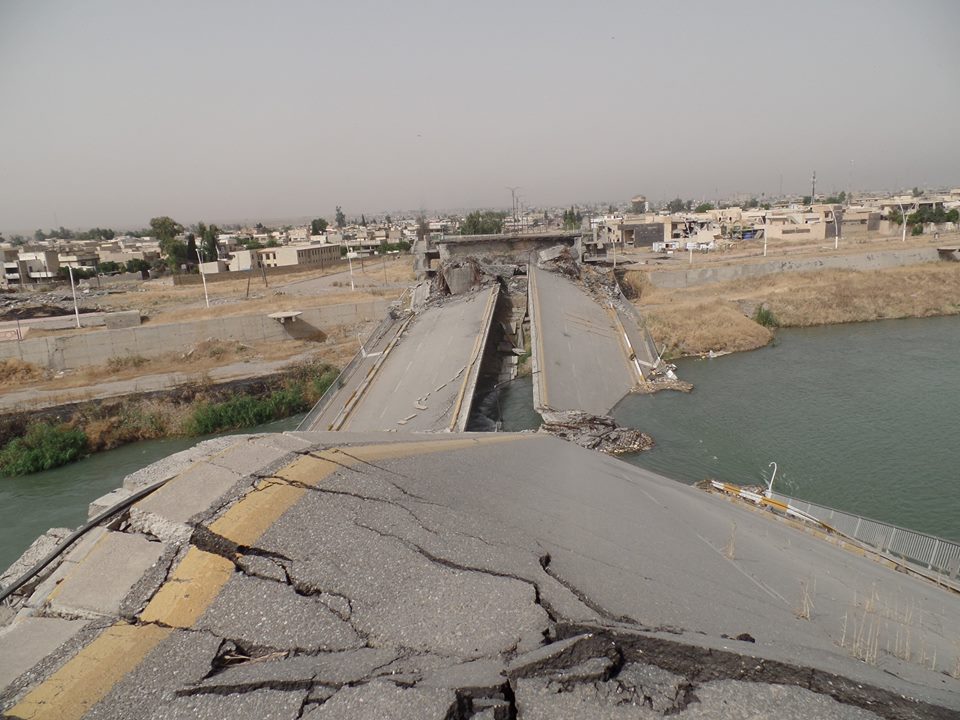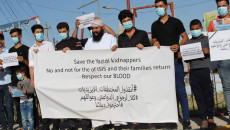June 10, 2014 is a completely different and unusual day for the residents of Mosul; the city has been going through a difficult security situation since 2005, but nothing like that day: explosions, roads blocked and curfews to the takeover of the area by the fighters of the Islamic State of Iraq and the Levant (ISIL).
Mosul is in turmoil, with security forces relocating and calling on people not to leave their homes for any reason. University students are trapped in the streets and some are walking home for tens of kilometers.
In 17 Tammuz neighborhood at the eastern part of Mosul, clashes continue, ending with a car bomb explosion in Al-Zanjali, targeting security forces at the last line of defense, as many others have thrown away their military uniforms and fled to safer areas while some took off military uniforms to unveil their pro-ISIL dress and side with them publicly.
The streets of the city are filled with weapons, helmets and discarded military uniforms of the soldiers fled the army and other security forces, leaving their vehicles on one side of the street and sometimes in the middle of the road. The Christians who insisted to stay in Mosul despite the violence since 2003, were the first to flee. The military plan to close the bridges failed and the city fell within hours.
I knew the situation would get worse, so when the area was empty of security forces, I moved my relatives to the left bank of Mosul
“I knew the situation would get worse than before, so when the area was empty of security forces, I moved my family to the left side of the city and we fled to the Kurdistan Region,” said Abdullah Al-Obaidi who was helping his old father on w chair wheel.
On the same day, ISIL captured several other areas in Ninewa, Kirkuk, Diyala, Salahaddin and Anbar provinces.
The beginning of internal displacement
On that day, the queues of vehicles from Mosul towards the Kurdistan Regional Government (KRG) gates were growing longer and the scene at the checkpoints in Duhok indicated a mass exodus.
"We stopped at a checkpoint in Duhok all day and night. I had many people with me. We had to sleep in the car and on the street. The most important thing was not to return because I was working for Sama Mosul TV and two of my colleagues were killed,” Al-Obaidi recalls.
According to the United Nations and the Iraqi government, six million people have been displaced since June 10, mostly from Ninewa.
Asil al-Nujaifi, the former governor of Ninewa, went at night to the streets and neighborhoods that were not yet controlled by ISIS, calling on citizens to fight "terrorism" that is threatening the city.
Most of the then administrative and security officials of Mosul were interrogated by a committee of inquiry and faced several charges for the fall of the city.
"Asil al-Nujaifi predicted the dangers facing the city, but instead he was responsible for his anti-Baghdad policy, especially with the then Prime Minister Nuri al-Maliki," Ali Ghanim, political observer, told KirkukNow.

More than half a million citizens left Mosul on that day, according to a local government source, but few had returned after a few days for various reasons.
Dr. Mohammed Attar, a resident of Mosul, told KirkukNow, “Initially, different groups joined the organization when it entered Mosul, such as the Naqshbandis and others but after a few days, the black flag of the organization was hoisted on the building and everyone was shocked.”
The fall of Mosul story
Residents of Mosul believe that June 10 is not the only history of the fall of the city, because Mosul was originally under the control of al-Qaeda, as since 2005 there were infiltration into security agencies, imposing fees on contractors and businessmen.
“They told me to go to a house in the Al-Intsari neighborhood on the left bank of Mosul for trial and if I didn't go, I would put my life on it,” said Dr. Mohammed al-Attar, a prayer leader at one of Mosul mosques famous for preaches disliked by the extremist militants.
“I went and saw several people guarding a house and I waited until I was brought in to the judge because there were other people waiting for trials, while the official security forces were on the streets.”
Mosul and most of Ninewa were under the rule of ISIS for three years (2014-2017), which displaced hundreds of thousands of families from all communities. The province's ethnic minorities faced killings, kidnappings, violence and displacement.
Mosul did not fall on June 10, but had already fallen to ISIS
"Mosul did not fall in that history, but it fell under the control of the organization earlier and June 10 was the official announcement of the fall of the city, until later safety and security were restored by the efforts of all security forces," Najim al-Jibouri, governor of Ninewa, told KirkukNow at eighth anniversary of Mosul takeover by ISIS.
What did Mosul lose?
June 10 caused heavy damage in Mosul, according to official and unofficial estimates:
15,000 civilians were killed or missing, according to human rights groups.
$10 billion losses to all sectors.
$36 billion in treasury, weapons and ammunition were left behind.
250,000 houses were demolished in the fight against ISIS.
Minimum cost of repairing one of the 100,000 damaged housing units is $30,000
8,457 economic government units were damaged during the war.
$88 billion fund is needed to rebuild the controlled areas.
144 facilities at Mosul University were destroyed and 80% of it are not usable
57 out of the 59 bridges in Ninewa collapsed in the fight against ISIS, including five main bridges on the Tigris River, which divides both sides of Mosul.

What did Mosul achieve?
According to previous investigations by KirkukNow, most of the service sectors in Mosul are still destroyed by the war, the remnants of the war remain and people are not satisfied with the reconstruction process.
But some believe the province has not seen peace, safety, stability and security since 2003, until 2018, a year after the end of ISIS rule.
"If it hadn't been for that day, the city would not have been calm and the situation would not have been resolved. Without that day, Iraq would not have survived the sectarian war,” Ghanim believes.
Ninewa is Iraq's second largest province, covering an area of more than 33,000 square kilometers and consisting of 31 administrative units, with a population of more than four million people.
According to reports from international and local organizations; Mosul is considered one of the most peaceful and stable cities in Iraq, the second only to Duhok, according to official statements.






